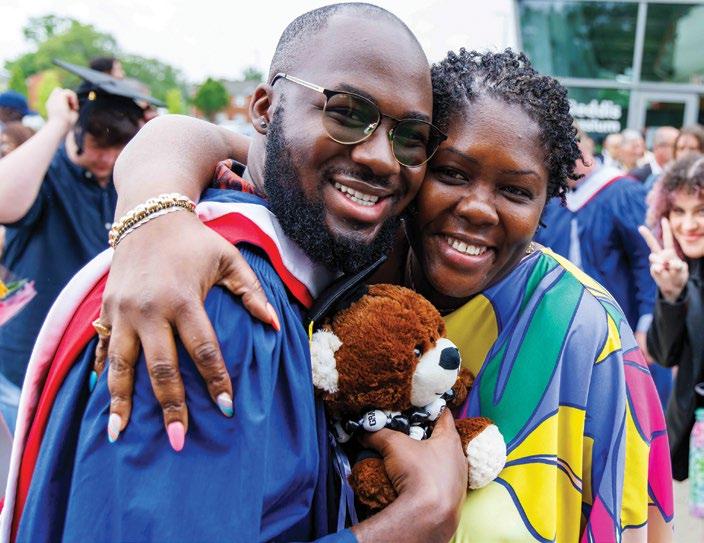








As a Brock graduate, you have access to special events, professional development opportunities, financial perks and more. Make the most of your Brock connection!
As a Brock graduate, you have access to special events, professional development opportunities, financial perks and more. Make the most of your Brock connection!
Scan to tell us what’s new with you

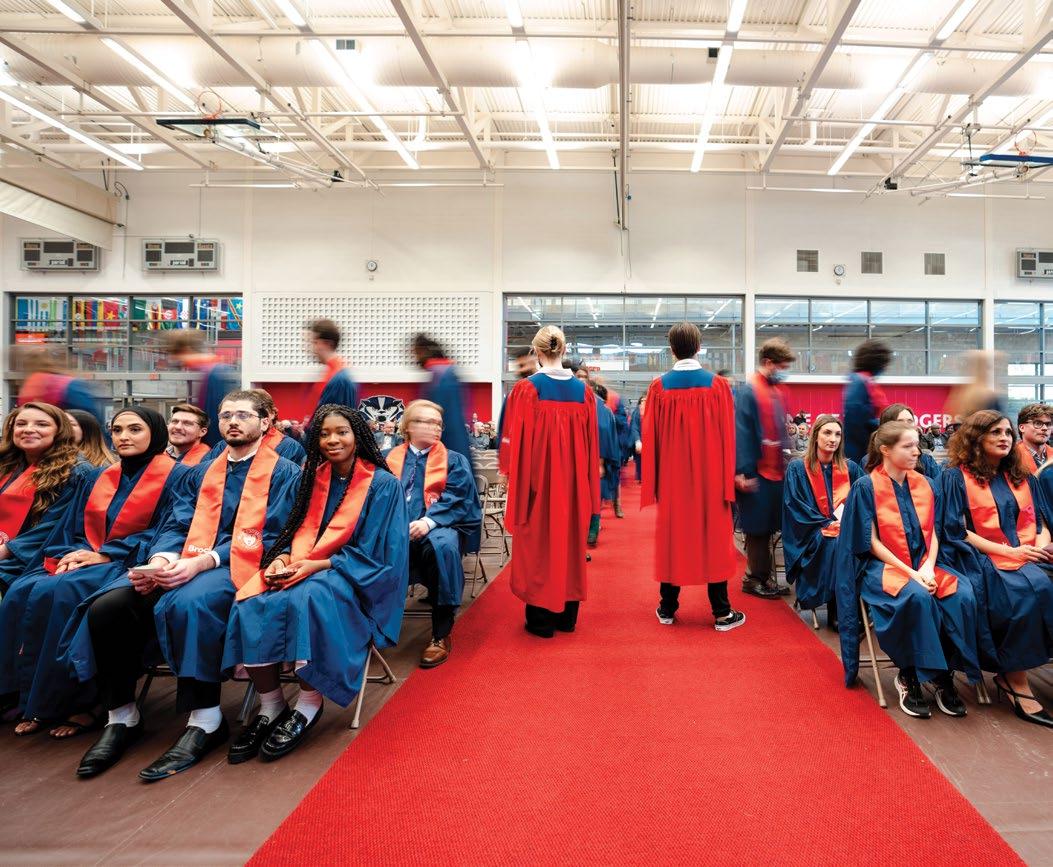
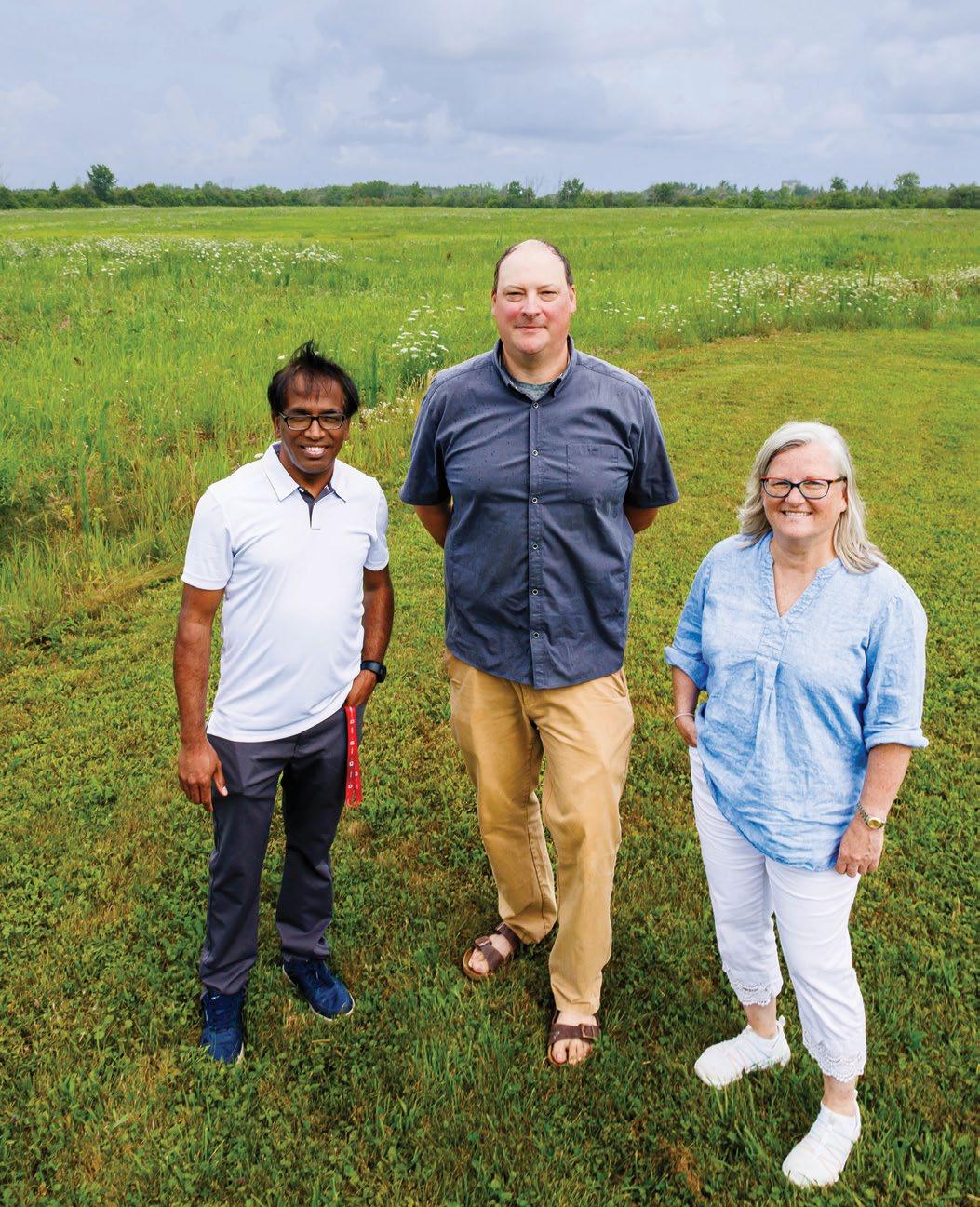



EDITOR
Maryanne St. Denis
PUBLISHER
Matt Terry
ART DIRECTOR
Jenny Tilbrook
DESIGNERS
Myles Fisher
Alyssa Gibson
PRODUCTION CO-ORDINATOR
Roland Reece
CONTRIBUTORS
Sarah Ackles
Amanda Bishop
Laura Carlo
Gregory Junop
Tarryn Landman
Stephen Leithwood
Kaitlyn Little
Cathy Majtenyi
Gillian Minaker
Maryanne St. Denis
Matt Terry
GENERAL INQUIRIES
Brock Alumni Relations maintains a database of contact information for each graduate in accordance with all legislative requirements protecting privacy. We do not sell, trade or give away our mailing lists. If you do not wish to receive the magazine, or if you prefer to subscribe to our digital edition of Surgite, please fill out the form at brocku.ca/alumni
STAY IN TOUCH
Do we have your correct name and address? If not, please call 905 688 5550 x4190 or update your information at brocku.ca/alumni
BEYOND PRINT
@brockuniversity
linkedin Brock University Alumni
facebook brockuniversity
instagram @brockuniversity
tiktok @brockuniversity
Surgite/sur-gi-tay/Latin for “Push on”
The inspiring last words of Maj.-Gen. Sir Isaac Brock

FROM THE PRESIDENT
Dear Badgers,
In September 1964, Brock opened its doors with the goal of serving the educational needs of the Niagara community.
Six decades later, we continue to deliver on that goal, while using our growing influence to help reshape the world in big and small ways.
Today, we play a critical role in Ontario’s grape and wine industry. We take part in missions to Mars. We’re shedding light on humanity’s impact on the planet and its climate. We’re re-imagining Canadian agriculture for a sustainable future. And we continue to provide a unique, career-ready education for students in Niagara, across Canada and around the world.
Our story is one of consistently punching above our weight. Of exceeding everyone’s expectations. Of harnessing courage. Of cutting through the noise and making a difference.
Our story is about breaking through.
For 60 years, Brock has been a place where anything is possible. Where everyone is given the tools, supports and unique experiences — inside and outside the classroom — that ignite potential and create opportunity.
Brock alumni have an impact in communities at home and abroad, as innovative leaders in business, health care, education, social justice, the arts, politics and more.
And chances are, there’s a Brock grad helping to manage your favourite sports team.
This year, we’re taking some time to celebrate this wonderful institution, its people and all that we’ve accomplished together.
This issue of Surgite magazine features just a few of the many (many!) examples of Brock’s extraordinary impact on society. I hope you enjoy reading these inspiring stories, and I look forward to celebrating all things Brock with you throughout the coming year.

LESLEY RIGG President and Vice-Chancellor, Brock University
BY TARRYN LANDMAN
Push on.
A translation of Brock’s motto, “Surgite,” these words reflect the perseverance that has driven the University’s founding and growth for more than 60 years.
Brock’s story has always been about people breaking through barriers and building for the future.
When it became clear in the 1950s that the region needed a university to retain its young residents seeking a quality education, the local community worked tirelessly to make it happen.
The first major step forward was a 1957 resolution drafted by Flora Egerter, with the support of the Allanburg Women’s Institute, calling on the Government of Ontario to consider planning a university for Niagara.
The community’s persistence paid off when the Brock Founders’ Committee, led by Arthur Schmon, received approval to create a new university in 1962.
Two years later, an electrician’s strike delayed what was to be the opening of Brock’s Glenridge Campus at a former refrigerator factory warehouse at the foot of the Niagara Escarpment. The University’s roughly 140 students took the change in stride, with the first few weeks of classes taking place in a local church instead.
As Brock worked to establish itself, and what is now known as its main campus, the community again stepped up to help.
The Founder’s Committee launched the Brock University Founding Fund in 1965 and raised more than $6 million between 1965
and 1970 with the support of residents, municipalities and businesses. Niagara’s labour unions, for example, encouraged members to donate a day’s pay per year during that time.
Six decades later, the University remains deeply rooted in Niagara. It has changed the lives of more than 120,000 graduates, nurtured groundbreaking research and had an impact on communities around the world. From a grassroots community campaign to vibrant comprehensive university, Brock continues to push on into the future.
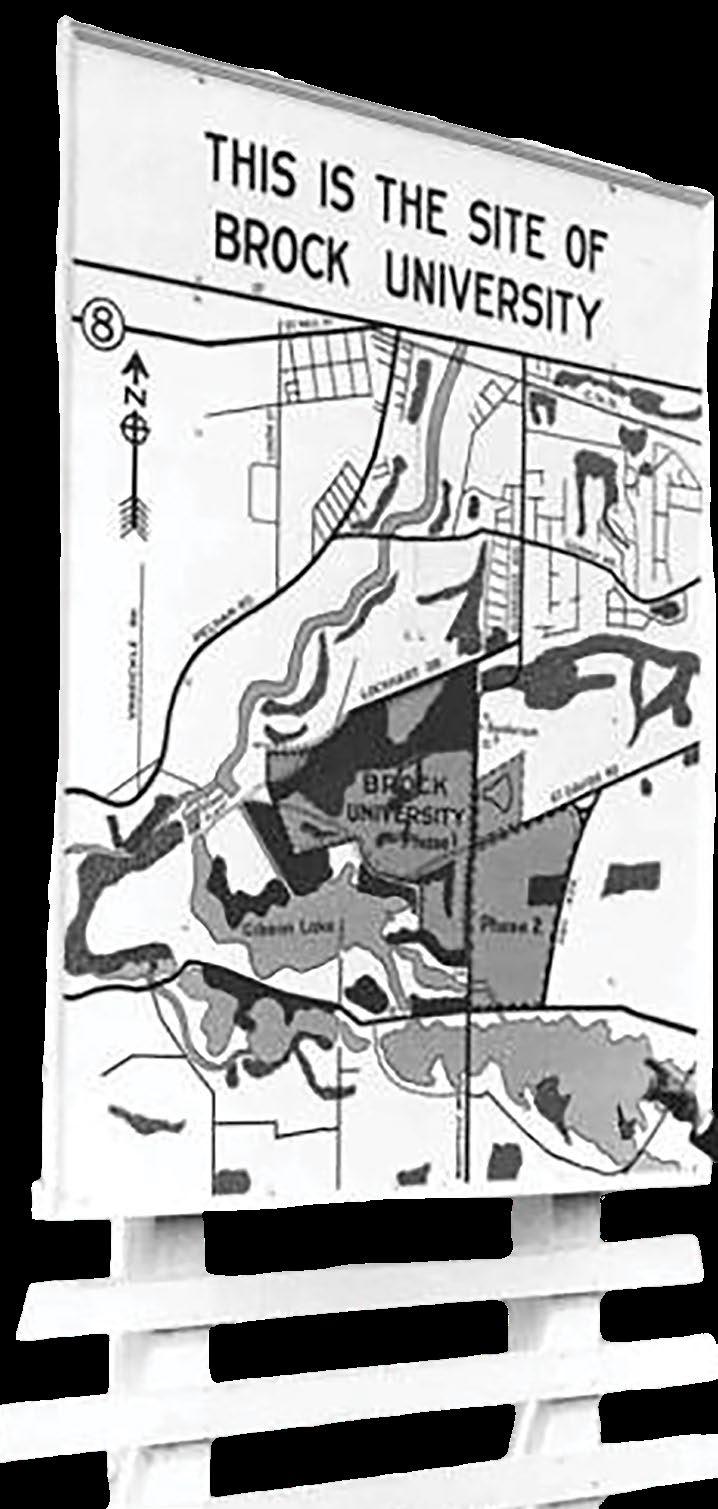



1. Workers at McKinnon Industries — a subsidiary of General Motors — contributed to Brock University’s Founding Fund. 2. From left: In 1963, Ontario Premier John Robarts met with Flora Egerter of the Allanburg Women’s Institute, Emma Bearss, former President of the Welland County Women’s Institute and Secretary of the Niagara Peninsula Joint Committee on Higher Education, and Arthur Schmon, Brock University Founders Committee Chair. 3. Members of the Allanburg Women’s Institute in 1964, including Flora Egerter, Alice Dougherty, Agnes Kinnaird, Helen Baufeld, Freda Geroy, Mae Stephenson, Jean Harley, June Egerter, Jean Egerter, Orcad Vanderburgh, Edna Egerter, Freda Hagar, Marge Harley, Ethel Batty and Edith Zieman. 4. In this 1964 photo, Vice-President Stanley Deeks and President James A. Gibson stand before the billboard advertising the newly chosen location for Brock University.



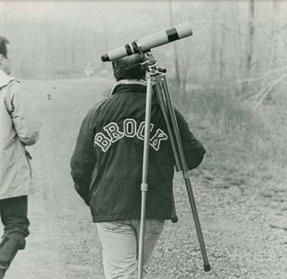



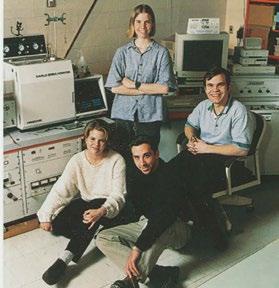





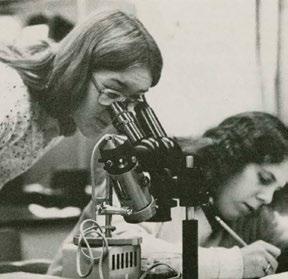
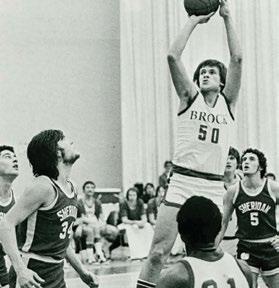




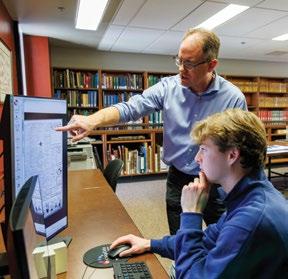






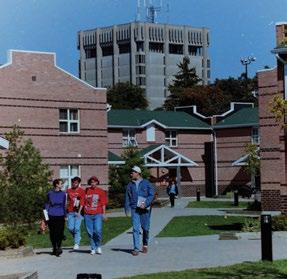








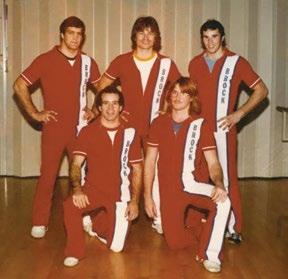


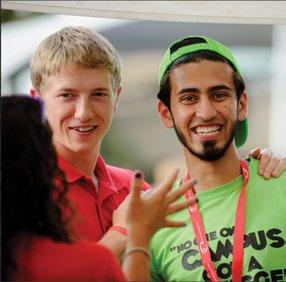
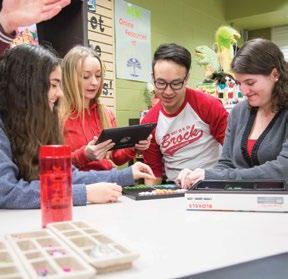
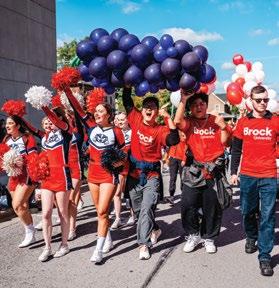















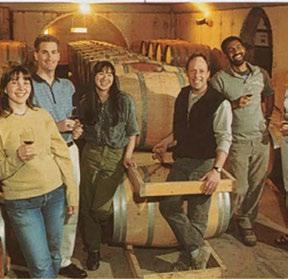

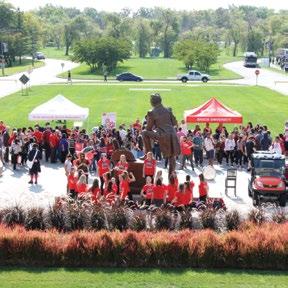


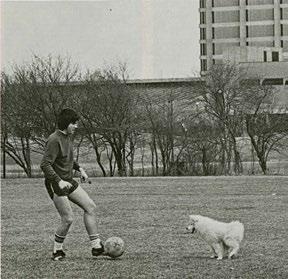



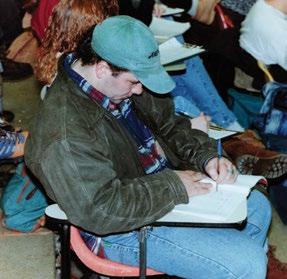










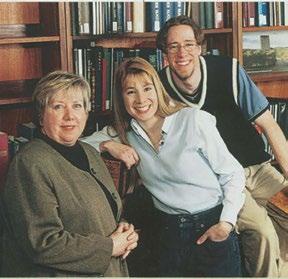
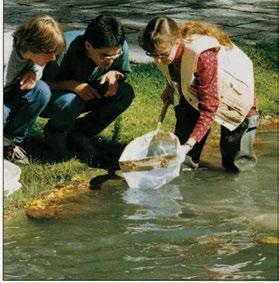

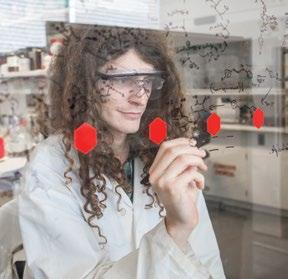

BY LAURA CARLO
Ian Beddis (BSc ’68, LLD ’00) is incredibly proud to be a Badger. And that feeling has only grown with time.
A member of Brock’s first graduating class — known as the Silver Badgers — and former President of the University’s Alumni Association, Beddis credits much of his early success to both the connections he made with fellow students and faculty on campus as well as the quality of education he received.
“Everyone knew everyone,” he says of his alma mater. “I learned very quickly that what I learned at Brock stood me in very good stead.”
Beddis would go on to have a successful career in finance but always remained connected to the University. In addition to serving on Brock’s Board of Trustees from 1973 to 1979, he now has a gym bearing his name on campus, where — in a fitting tribute — many Convocation ceremonies have since been held.
Like Beddis, his Silver Badgers classmates each made a choice to invest in Brock and to grow and learn alongside a new university while encouraging and inspiring others to do the same.
While the University’s first students could enrol in one of eight departments,
including Biology, Chemistry, English, Mathematics, French, Geography, History/Politics and Spanish, Brock’s educational offerings have since grown substantially. With more than 70 undergraduate programs and more than 50 graduate program options to choose from, students are able to explore their passions while developing the skills they need to make a lasting impact across many different fields.
“Brock’s reputation and its physical positioning in Niagara gives it a huge advantage in terms of being able to continue to grow and bring on new programs,” Beddis says. “I get the Brock News every day and the cross section of graduates today, in many respects, are even more impressive because of the courses they are able to take and the success they’ve had.”
To mark Brock’s 60th anniversary and celebrate the significant impact its graduates have had in their local and global communities over the past six decades, the University created a special recognition: the Alumni Brilliance Awards.
More than 200 outstanding graduates were nominated, with 60 alumni, spanning the history of the University, chosen to receive the designation. To view the list of recipients,
visit brocku.ca/alumni/awards/alumnibrilliance-awards
Submitted from around the globe, the nominations highlighted the impressive career accomplishments and community contributions of Brock’s alumni family, making it no easy task to pare down to 60 honourees, says Kim Post (BA ’03, MEd ’14, BEd ’21), Director, Alumni Relations.
“What was also apparent throughout the awards process was the tremendous amount of pride that our graduates take in their alma mater,” she says. “They carry that school spirit with them everywhere they go, whether they graduated last year or 50 years ago.”
The awards were also created to honour the connection that Brock maintains with its alumni.
“There is a feeling of community that never fades,” Post says. “It is a part of the University’s past, its present and, I can confidently say, its future. It’s what makes Brock such a special place.”
Engaging with the alumni community “not only allows us to honour their successes but also offers incredible opportunities to share their stories and build a stronger future together,” she says.

Graduates (primary degree) by the decade.



19,728
There is a feeling of community that never fades.”
— Kim Post (BA ’03, MEd ’14, BEd ’21), Director, Alumni Relations

6,454
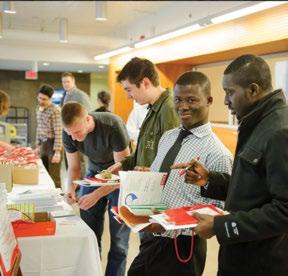

11,444

18,274
While the bond between Brock University and its graduates often builds during their educational journey, that connection does not end at Convocation.
As alumni celebrate successes in life, the University celebrates with them.
With Brock marking its milestone 60th year, the University is recognizing 60 outstanding graduates for their remarkable achievements and community contributions.
The recipients — chosen from hundreds of nominations from all over the world — will be featured throughout the 2024-25 school year. To learn more about the recipients, visit brocku.ca/alumni/alumni-brilliance-awards

Brock’s first graduating class holds a special place in the University’s history.
These 39 students crossed the Convocation stage to receive their bachelor’s degree in 1967, three years after Brock first opened its doors.
The 1967 class, along with Brock’s first honours degree graduates in 1968, would earn the unique distinction as the Silver Badgers. It was the University’s founding
President, James A. Gibson (LLD ’84), who nicknamed the group as a testament to their perseverance and spirit.
The Silver Badgers remain an important and celebrated part of Brock’s past but have also maintained their connection to the University through time.
During the 2022 Homecoming celebration, a display honouring the graduates, made possible by generous support from members of the Silver

Badgers themselves, was unveiled in Brock’s Rankin Family Pavilion.
Showcasing the University’s early history, the exhibit is housed in a prominent location on campus and serves as a regular reminder of how an institution with humble beginnings can grow to be the launch pad for more than 120,000 graduates and counting.
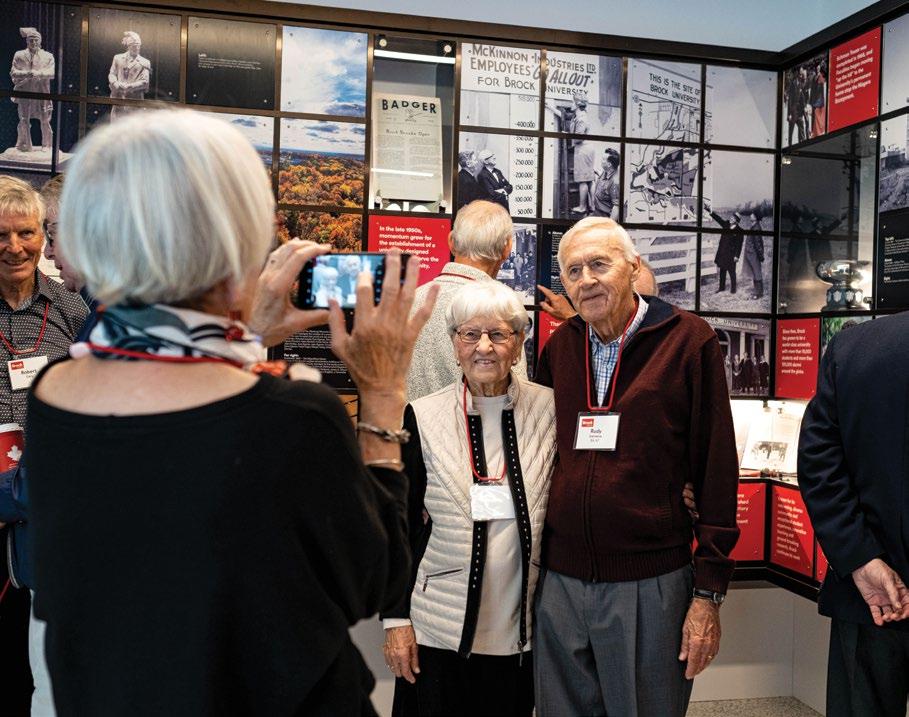

BY KAITLYN LITTLE
Sorcha Killian (BBA ’19) has found her calling in the non-profit sector.
But the Goodman School of Business graduate’s journey to founding a national non-profit in her home country of Ireland at the age of 23 came from an unexpected path.
It began when Killian connected on a volunteer message board with two like-minded people looking to make a difference in their communities. The trio noticed there was a lack of access to hygiene products and safe places for people to clean themselves across Ireland — and became determined to find a solution.
That led Killian, along with Ciára Dalton and Rosie McDonagh, to grow their relationship offline and found Hygiene Hub — a national charity focused on both relief and advocacy for hygiene poverty.
The three co-founders officially launched the organization in late 2019 while also working and studying. However, the urgency of their work quicky intensified with the onset of the COVID-19 pandemic in March 2020, which shuttered public washrooms and created additional supply access issues.
“We’ve seen how big the need is; people are being forced to make really difficult decisions,” Killian said. “With our own research, we’ve
started working with other poverty-focused charities to change the social landscape in Ireland.”
To date the organization has donated more than 60,000 kilograms of products and assisted an estimated 20,000 Irish families. Now Hygiene Hub is also making pivotal policy advocacy and research advances to get this work on the national agenda.
“There’s always more need than you can fulfil, but that drives you to be more innovative and more creative,” she said.
Last year, Kilian was one of six people selected to take part in the Social Entrepreneur of Ireland Impact Program. With the program’s support, she was able to spend a year growing Hygiene Hub from a business perspective.
During her studies in Goodman’s Bachelor of Business Administration International Double Degree Co-op program, Killian focused on finance and entrepreneurship. The program saw her spend her first two years at Dublin City University in Ireland and second two years at Brock, earning degrees from both institutions while building multicultural competencies and international work experience along the way.
This work spurred a transition to the United Kingdom to work with small tech companies looking to provide essential services alongside the government. After this work, the European Commission selected her as one of 16 Next Generation Impact Fellows where she spent several months working in Spain and Switzerland helping small businesses and local women increase their digital connectivity. These experiences all acted as vital building blocks preparing her to lead in the social enterprise sector.
Sorcha is a shining example of what Brock’s international students can do with the knowledge they’ve learned at the University.”
— Barry Wright, Dean, Goodman School of Business
After Brock, Killian started working in the venture capital industry in Ireland and Portugal as an advisor for startups, growing in that role to take on high net value growth companies looking at international expansion. That’s when she landed an international fellowship where she focused on bringing increased diversity into the venture capital landscape working to connect the startup investment ecosystem with under-represented founders.
In her experience, working with social enterprises mirrors the lessons she learned in entrepreneurship and venture building in a lot of ways.
“Social enterprises are less hierarchical, and we can work really quickly and be innovative,” she said.
“If you have an idea that can make someone’s life a little bit better then you are empowered to do that. You have the freedom and creativity to figure it out and see the impact of the work and the growth first-hand.”
Killian’s now transitioned to working full time in the social impact sector, with Hygiene Hub continuing to grow its partnerships and reach. She’s also taking on an additional role as operations manager for Sanctuary Runners — a solidarity-through-sport non-profit that uses running, jogging and walking to bring together asylum seekers, refugees, migrants and Irish residents.
“Sorcha is a shining example of what Brock’s international students can do with the knowledge they’ve learned at the University,” says Goodman Dean Barry Wright. “Brock’s graduates are using their skills to make a difference in the lives of people across the globe, and we couldn’t be prouder.”

With our own research, we’ve started working with other poverty-focused charities to change the social landscape in Ireland.”
— Sorcha Killian (BBA ’19)

BY CATHY MAJTENYI
It was the great experiment of 1986.
A trio of Brock physicists was one of three teams in the world to verify the results of a physics experiment that led to major advances in technology.
Researchers from IBM’s laboratory in Zurich, Switzerland, had published a groundbreaking study that a compound derived from barium, lanthanum, copper and oxygen could potentially make a new superconductor operating at a record-high temperature.
A superconductor is a type of material that, when cooled to extremely low temperatures, allows electricity to flow easily and indefinitely with no resistance or energy loss. Up until 1986, the temperature at which this occurred was -253 degrees Centigrade, which involved expensive and awkward-to-use liquid helium.
The experimental results showed this new material could be effective at a much “warmer” temperature of -196 degrees Centigrade using liquid nitrogen, making this superconductor far cheaper and more versatile than low-temperature options.
Brock Physics Professors Fereidoon Razavi, Bozidar Mitrovic and the late Frans Koffyberg were intrigued. They hunkered down to verify the results of high-temperature superconductivity, as did teams in Switzerland and Bell Laboratories in the United States.
The Brock team submitted their paper to the leading-edge journal Physical Review. They were the second worldwide, and the first in Canada, to replicate the results of IBM’s study.
High-temperature superconductors are now used in the powerful magnets of Magnetic Resonance Imagers (MRIs), power transmission cables, generators, motors and energy storage units such as batteries, among their many applications.
The team’s ability to take research in their field one step further enabled both the creation of an invention and, more importantly, deeper understanding of a topic.
And they weren’t alone.
Over the past 60 years, there have been many examples of research breakthroughs at Brock that have bettered their respective disciplines.
Physics Professors (from left) Bozidar Mitrovic, Fereidoon Razavi and the late Frans Koffyberg worked as a team to replicate the results of an experiment in which a new high-temperature superconductor was created.

Such was also the case with Anthony Bogaert, whose 2004 study was a pioneering probe of people once known as “Category X.”
Dr. Bogaert’s research helped set off an international wave of press that encouraged hundreds of thousands of asexual people to find community in ways that changed, and in many cases saved, our lives.”
—
David
Jay,
founder of the California-based Asexual Visibility and Education Network
In the late 1940s and early 1950s, American sexologist Alfred Kinsey created the Kinsey Scale characterizing human sexual behaviour. A small minority of people surveyed fell into Category X: “No socio-sexual contacts or reactions.”
Awareness of what came to be known as “asexuality” subsequently grew, but academic research on the topic was almost non-existent — until Bogaert, a Brock Professor of Health Sciences, had an “aha” moment while on sabbatical researching sexual orientation.
“I came across a question in a national sample of Britain asking about people’s sexual orientation in which the researchers gave people a rather unusual option of saying ‘I have never felt sexual attraction to anyone at all,’” he says. “Given there really was no modern research addressing asexuality, I felt it was important to study those who indicated that they had no sexual attraction to others.”
Bogaert’s resulting study, “Asexuality: Prevalence and Associated Factors in a National Probability Sample,” caught the attention of researchers across the field.
“Dr. Bogaert’s 2004 article was key in opening up the mostly uncharted field of asexuality both by providing some of the first data on its prevalence but also by identifying factors associated with experiencing a lack of sexual attraction,” says Sandra Byers, Professor Emerita of Psychology at the University of New Brunswick and renowned sex researcher.
Bogaert’s 2012 book, Understanding Asexuality, fleshed out his research and made a case for asexuality becoming a “new” sexual orientation.
David Jay, founder of California-based Asexual Visibility and Education Network, calls Bogaert’s “well-grounded” work “transformative.”
“Dr Bogaert’s research helped set off an international wave of press that encouraged hundreds of thousands of asexual people to find community in ways that changed, and in many cases saved, our lives,” Jay says.

Transformative research connects people in powerful ways. Ubuntu — the African philosophy “I am, because you are” — is at the heart of Dolana Mogadime’s research on animating the legacy of Nelson Mandela in Canadian classrooms.
Mandela, imprisoned for 27 years for opposing the injustice of apartheid imposed by South Africa’s ruling white minority, would go on to co-win the Nobel Peace Prize in 1993 and become South Africa’s first democratically elected president in 1994.
Mogadime, who also originates from South Africa, has intergenerational ties to Henry Selby Msimang, one of Mandela’s political forbearers. Her interest in studying the liberation struggle for political change was inspired by her activist mother and teacher, Caroline Goodie Tshabalala Mogadime.
“I am a big supporter of creative scholarship,” says the Professor of Educational Studies. “I believe it’s important to produce and disseminate knowledge accessible to all. Additionally, as a public intellectual, my view is this work should be available to children, youth and society.”
Mogadime and her curriculum writing team created the sevenpart teacher guide and resource, “Mandela Global Human Rights: Peace, Reconciliation and Responsibility: A Teacher Guide and Lessons for Educators.”
It teaches kindergarten to Grade 12 students, teachers and teacher education students about Mandela and the anti-apartheid struggle in South Africa, says Mogadime, adding that the material can help students take actions to fight poverty, racism and discrimination.
“The value of this program brings to light the importance of understanding history in context to culturally relevant issues,” says Sherilyn Lehn (MEd ’16), a high school teacher with the District School Board of Niagara and Grand Erie District School Board.
“It also allows the educator to guide students to make connections to current issues and encourages them to become participants in creation of a more peaceful, and culturally relevant and responsive society,” she says.
As an act of resistance, Dolana Mogadime, Associate Professor in Brock’s Faculty of Education, sits on a bench with the sign “Europeans only” at the Mandela: Struggle for Freedom exhibition in Winnipeg’s Canadian Museum for Human Rights. During Apartheid in South Africa, the domestic worker in the photograph in the background would not have been allowed to sit beside the white child in her care on that bench.
I believe it’s important to produce and disseminate knowledge accessible to all.”
— Dolana Mogadime, Professor of Educational Studies

The past 60 years have seen Brock researchers make tremendous contributions in all areas of life locally, nationally and internationally.
��Professor of Psychology Michael Ashton co-developed the HEXACO Personality Inventory, an instrument that assesses the six major dimensions of personality: honesty-humility, emotionality, extraversion, agreeableness, conscientiousness and openness to experience. The scale is widely referenced in psychology research and practice.

Professor and Chair of Dramatic Arts Jennifer Roberts-Smith is co-leading the first national, cross-sectoral partnership approach to decolonizing, anti-racist, equitable, diverse and inclusive systemic change ever undertaken in post-secondary theatre education in Canada.

Professor of Earth Sciences Francine McCarthy led a multiinstitutional team that studied sediment layers at the bottom of Crawford Lake in Milton, Ont. As a result of their work, an international geological body selected the site as being the location on Earth that most clearly shows the boundary between the current Holocene epoch and a proposed new epoch, the Anthropocene.
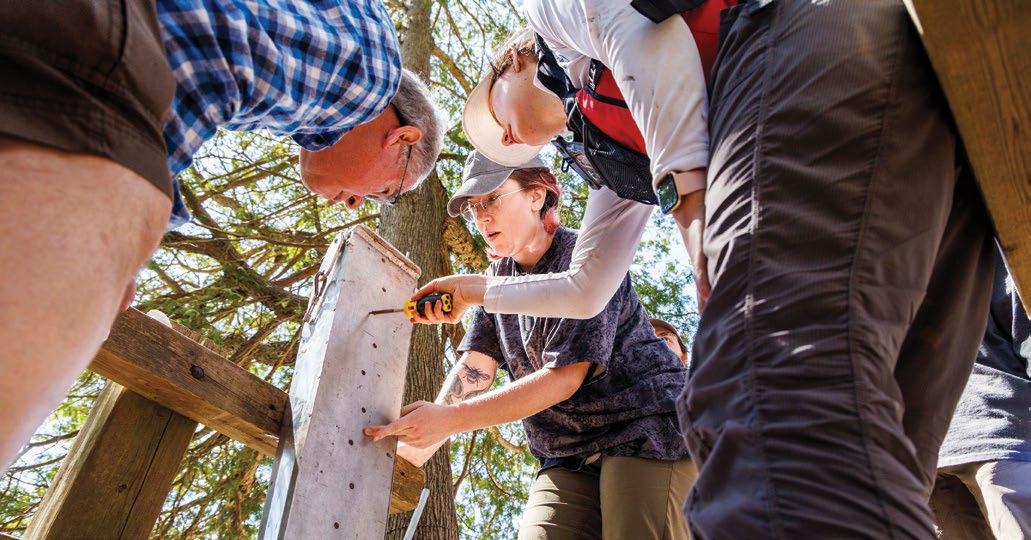
Professor Emeritus of Epidemiology Martin Tammemägi developed a lung cancer prediction model that is more efficient than previous tools in selecting people to undergo lung cancer screening, enabling a greater number of cancers to be caught early. His model is being used in health-care systems across Canada and internationally.

Health-care systems adopting all or parts of Professor Emeritus of Epidemiology Martin Tammemägi’s lung cancer prediction model include the United Kingdom National Health Services (NHS) and cancer care programs in several Canadian provinces, with Saskatchewan set to implement a customized Indigenous model in spring 2025.

During its milestone anniversary, Brock is looking back on six decades of accomplishments, growth and countless memories. Here’s to a future filled with promise as we continue to achieve excellence together.

BY GILLIAN MINAKER
The world has changed over the past 60 years, but Brock’s commitment to teaching innovation has remained steadfast since its doors opened in 1964.
As the first Canadian university to have Senateapproved definitions for experiential education, Brock has remained at the forefront of innovative teaching and learning by placing meaningful student experiences and the integration of theory and practice at its heart.
“Brock has long been a Canadian post-secondary leader in experiential education, and we are proud to offer high-quality and impactful experiential education opportunities across all of our programs,” says Rajiv Jhangiani, the University’s Vice-Provost, Teaching and Learning.
Recognized as a “high-impact practice” that promotes deeper learning, experiential education creates hands-on experiences to develop skills and make learning come alive, he says.
“Whether it’s marketing students building communications plans for local not-for-profits, or biology students testing mosquitos for West Nile virus with a local laboratory, experiential education effectively bridges theory and practice and remains a core element of the Brock student experience.”
For Interactive Arts and Science grad Dylan Pineo (BA ’17), experiential education helped him land his dream job at one of the top Triple-A game design studios in the world, Rockstar Games — makers of the Grand Theft Auto franchise.
A World Designer, Pineo combines technical and design skills to craft environments for players that are believable and engaging.
“At Brock, we built the Niagara Military Museum an escape room experience from scratch,” he says. “In careers where the competition is fierce, practical skills are irreplaceable.”
In the Faculty of Education, tomorrow’s teachers are gaining real-world experience and developing skills in more than 2,000 schools across the Golden Horseshoe and beyond, digging roots in community and igniting inspiration.
District School Board of Niagara (DSBN) leader and educator Melissa McKinney-Lepp (BA ’01, BEd ’02, MEd ’22), for example, has brought theories from her studies at Brock directly to the classroom over the past 20 years.
From Teacher Education through her master’s, McKinney-Lepp developed innovative teaching practices in science, technology, education, arts and math focusing on social justice issues and equality.
“My time at Brock made me think beyond just putting ourselves in someone else’s shoes. It had me asking how can we take positive action for each other and our future?” she says.
At her school in Niagara Falls, where more than 35 languages are spoken, McKinney-Lepp employs techniques honed at Brock to foster inclusivity using technology to encourage students to share stories of their family and culture.
In careers where the competition is fierce, practical skills are irreplaceable.”
— Dylan Pineo (BA ’17), Interactive Arts and Science graduate
These types of educational exercises based on personal experience nurture empathy in young learners, unlocking new levels of understanding and growth, she says.
As an educator of educators, Brock is encouraging the next generation of thought leaders and changemakers to put their knowledge into practice to contribute to lifelong learning.
One of those leaders is Lori Goff (MEd ’09, PhD ’15), who embraced new ways of thinking about educational quality assurance during her time at Brock in her post-doctoral studies in Leadership in Education.
Now the Director of Paul R. MacPherson Institute for Leadership, Innovation and Excellence in Teaching (MacPherson Institute) at
McMaster University, Goff is leading the development and implementation of innovative teaching strategies and cuttingedge professional development programs in higher education.
“I was inspired by Brock to value a collaborative culture and was encouraged to create space for people to think about challenges faced in the world. I was motivated by the integration of theory and practice to bring people together to enhance and improve educational policies,” Goff says.
She supports people in conducting research on their teaching to contribute back to the literature on effective and innovative educational practices.
“This is how educators are changing the world,” Goff says.

Through various co-op placements and internships available in Brock’s Department of Digital Humanities, Dylan Pineo (BA ’17), now a World Designer at Triple-A studio Rockstar Games, took courses emulating real-world practices and challenges.
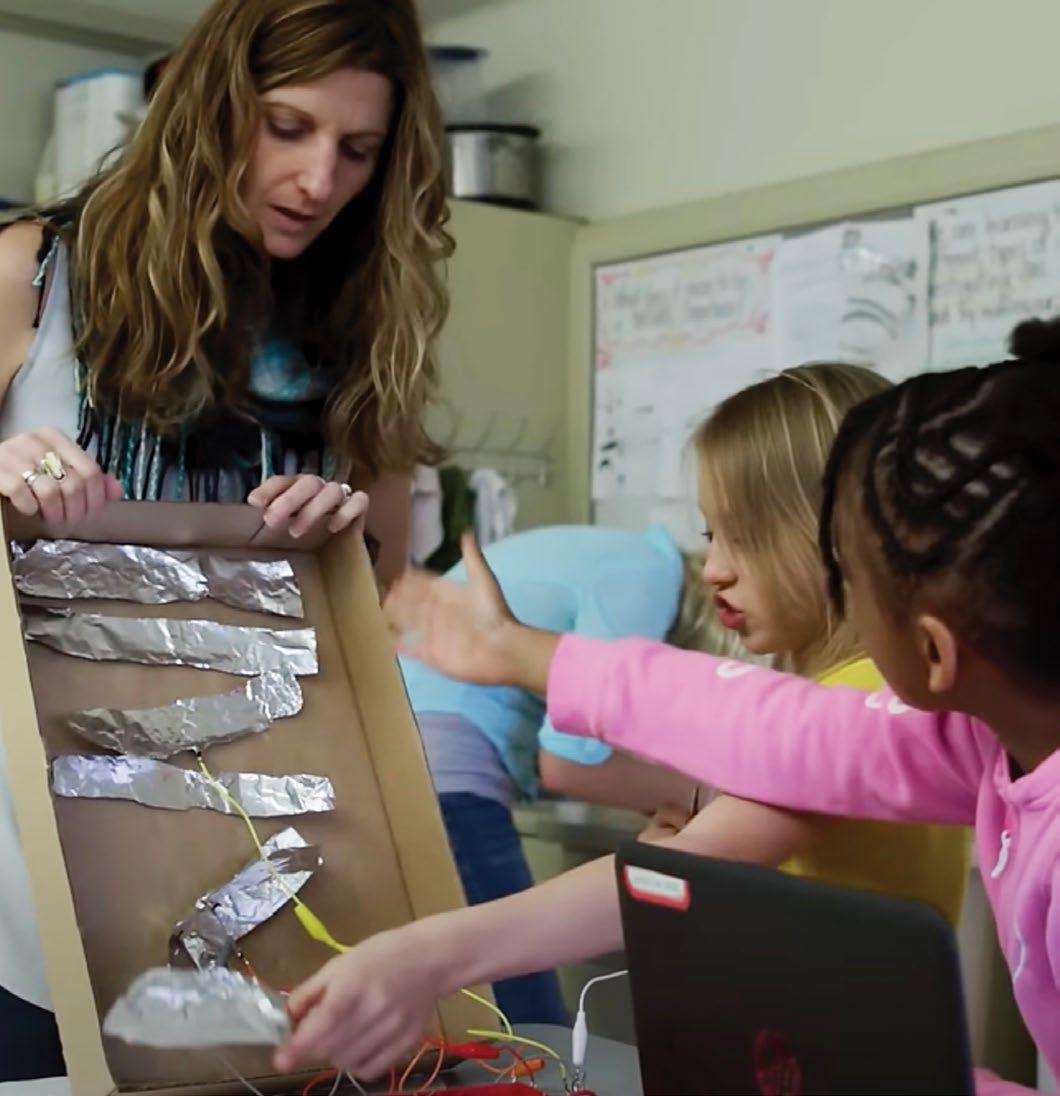
Students in Brock graduate Melissa McKinney-Lepp’s (BA ’01, BEd ’02, MEd ’22) Grades 2 and 3 class watch on as new equipment is introduced and the idea of a circuit is explored through play.

Melissa McKinney-Lepp’s (BA ’01, BEd ’02, MEd ’22) work in visual literacy is having a big impact on elementary education through international research and teaching presentations as she leads by example to fill in curriculum gaps.

Learning the transformative ways in which research informs practice, and vice versa, was a game changer for Brock graduate Lori Goff (MEd ’09, PhD ’15), who is now a senior leader in teaching and learning at McMaster University.
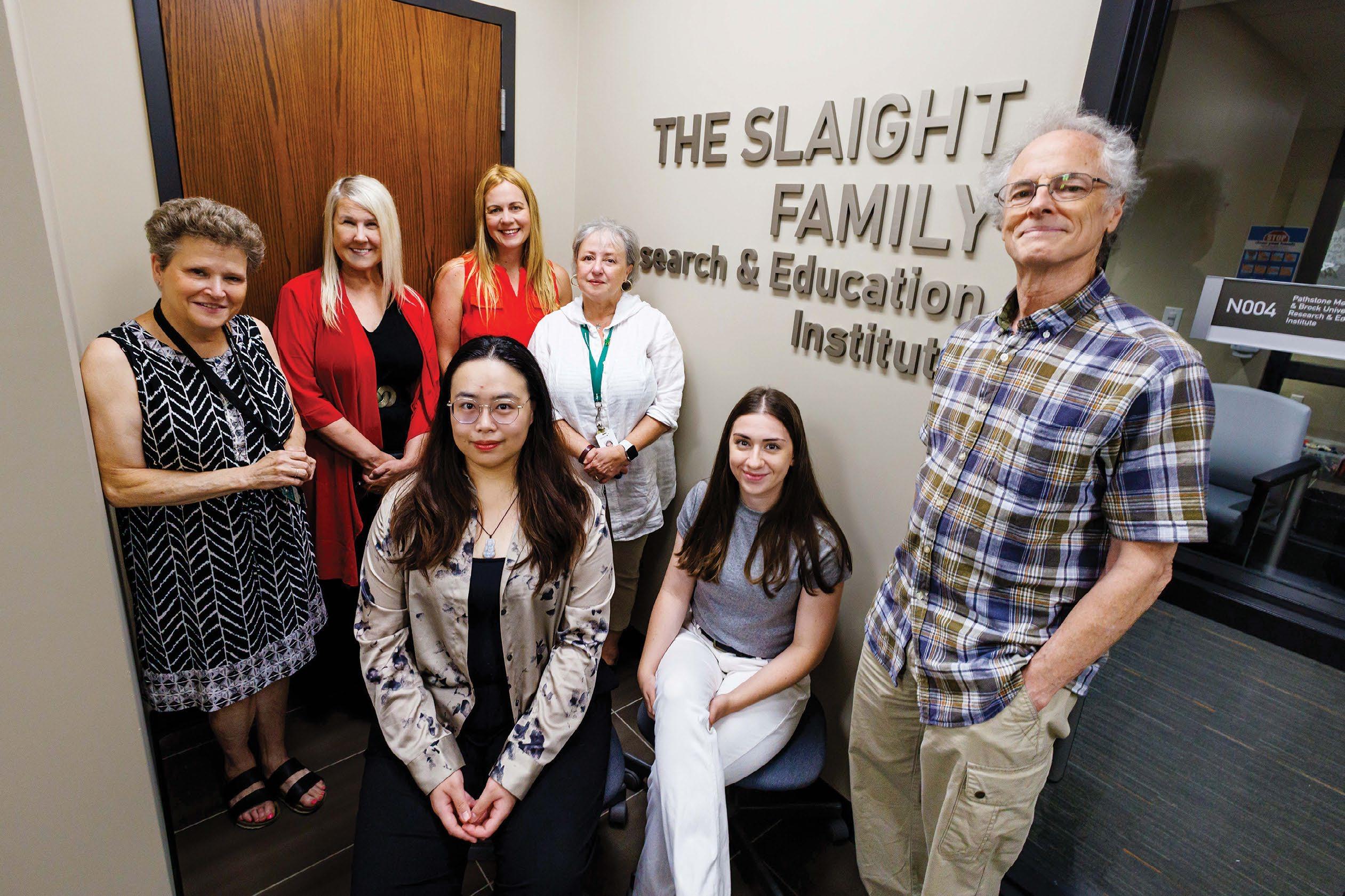
BY AMANDA BISHOP
In a dedicated lab space in the heart of St. Catharines, Brock researchers gather valuable data that is poised to make a difference in the lives of youth not only in Niagara, but also around the world.
Their exploration into the anxiety and attentional problems of children is made possible by a critical component they’ve woven into their research process: community connection.
It is through their relationship with Pathstone Mental Health that Ayda Tekok-Kilic, Erin Panda and Sid Segalowitz are able to collect the data they need through electroencephalography (EEG), which can then be shared with neuroscientists worldwide.
But this project is only one aspect of Brock’s multi-dimensional partnership with Pathstone, which was formalized in 2019. It is a prime example of the many deeply rooted relationships through which the University and local organizations and industries collaborate to promote the health, sustainability and prosperity of the Niagara region and beyond.
Professor and neuroscientist Tekok-Kilic, who has worked with Pathstone since 2008, says conducting research embedded in a clinical setting offers undergraduate, master’s and PhD students of the Developmental Neuroscience Lab (DNLab) a unique chance to gain insight through learning.

“I’m half clinician and half neuroscientist, so I know the challenges in clinical research and work,” she says. “Students bring research perspectives and theoretical approaches, but clinicians have to take care of things in the moment. Students learn they have to be flexible.”
Pathstone experts frequently visit campus to speak to classes and, since 2018, researchers in the Department of Child and Youth Studies regularly present findings and get feedback from the Pathstone team — an invaluable exchange of ideas that supports clinical work and helps researchers refine projects to maximize potential impact.
“It is such a rare and wonderful opportunity to be able to test research out in the environment that you want it to work in, to look at empirically validated strategies and see if they actually work in a clinical setting,” says Professor and Clinical Psychologist Tricia Vause. “Working in a multidisciplinary team to come up with answers means being able to share different perspectives, because a lot of times, we have different approaches — it’s a matter of finding a balance.”
1. Collaboration is key at Brock’s research space at Pathstone Mental Health’s Branscombe Centre in St. Catharines. Back row: Mental Health Clinical Manager Ulla Woodard (BA ’96), Associate Professor Erin Panda and Professor Ayda Tekok-Kilic. Front row: Clinical Manager Linda Morrice (BPhEd ’79, MA ’13), PhD students Zihang Bu and Lauren Stepien, and Professor Emeritus Sid Segalowitz.
2. Fourth-year PhD student in Child and Youth Studies Zihang Bu demonstrates an experiment using a high-density electroencephalography system with Associate Professor Erin Panda. 2
Linda Morrice (BPhEd ’79, MA ’13), Clinical Manager at Pathstone, worked closely with Vause and her team on the Dance With a B-E-A-T program and is now collaborating with Distinguished Professor Teena Willoughby on a Social Sciences and Humanities Research Council of Canada (SSHRC) Partnership Grant looking at technology, risk behaviours and well-being among teens.
Brock was created out of the aspirations of the Niagara community to have a local university, and we remain committed to working closely with community partners to tackle multi-faceted problems impacting our region and beyond.”
— Meaghan Rusnell, Interim Vice-President, External
In addition to research projects on everything from virtual reality for therapy delivery to caregiver and family relationships to brain responses and attention control, Brock and Pathstone have worked together on conferences, volunteer fairs, community consultations, professional development and countless experiential education opportunities, including the long-running I-EQUIP program training students in quality improvement.
“Working together, we’ve gathered a lot of data that either supports what we’re doing or adds to the knowledge in the field,” Morrice says of her long-standing relationships with Brock researchers and students. “Certainly, the exchange, transfer and translation of that knowledge is really important.”
Clinical Manager Ulla Woodard (BA ’96) says working with Brock “has yielded valuable insights that have directly influenced the treatment approaches at Pathstone Mental Health,” noting a recent project with Tekok-Kilic, PhD student Zihang Bu and Associate Professor Donato Tarulli that led to agency-wide implementation of findings related to measuring client satisfaction.
“This is a great example of the win-win that can come from a clinical-research partnership,” says Panda, an Associate Professor who co-directs the DNLab. “Students learn to apply research skills to issues that matter most, resulting in evidence-based tools supporting clinicians and families.”
Another Niagara organization teaming up with Brock to improve the lives of residents is Tools of Empowerment for Success



(TOES) Niagara, which seeks to empower immigrant and racially marginalized women and their families.
TOES Niagara recently launched a project with Brock’s Professional and Continuing Studies to create a Code of Conduct for the tourism and hospitality industry to prevent human trafficking in the region.
Funded through the Government of Canada’s Women and Gender Equality (WAGE) program, the project centres on community impact, with public consultations run by volunteers and a steering committee made up of key community members, including businesses, not-for-profits and other stakeholders building policy and resources for Niagara together.
Following several years of informal collaboration, including a successful mentorship program for Black youth run with Brock Human Rights and Equity since 2019 and a multi-year research collaboration on the social inclusion of immigrant women in Niagara led by Associate Professor Joanne Crawford, TOES Niagara signed a Memorandum of Understanding with Brock in 2021.
Partnering with industry provides another opportunity to maximize both local and global impact.
Norgen Biotek, founded in 1998 by former Brock Professor of Biological Sciences Yousef Haj-Ahmad (BSc ’80, MSc ’82), is worldrenowned for advancing the field of biotechnology research and testing. Brock’s collaboration with the Thorold-based company was recognized by the Council of Ontario Universities’ Research Matters program in 2016 as one of the province’s game-changing research partnerships.
That connection goes beyond research.
When the COVID-19 pandemic struck in 2020, the firm’s heightened efforts to manufacture rapid-test kits gave Brock students the chance to gain hands-on experience in the biotechnology field during a crucial historical moment.
And this fall, Brock welcomed its first class of majors in Integrated Engineering to the Yousef Haj-Ahmad Department of Engineering.
These examples and many more emphasize that Brock University is a community-engaged institution with a deep history of working collaboratively with organizations across Niagara to positively contribute to and strengthen the social, economic, environmental, and cultural landscape of the region. In 2021, Brock articulated its commitment to its role as a Regional Community Builder through the Brock University Community Engagement Strategic Plan.
“Brock was created out of the aspirations of the Niagara community to have a local university, and we remain committed to working closely with community partners to tackle multi-faceted problems impacting our region and beyond,” says Meaghan Rusnell, Brock’s Interim Vice-President, External. “Through research, service, experiential learning, mobilizing volunteers, hosting community events and more, we will continue to foster partnerships that produce mutually beneficial outcomes that enhance community vitality.”

More than 20 years ago, the Government of Japan donated 200 Sakura trees — also known as cherry blossom trees — to Brock University as an extraordinary gesture of friendship and goodwill between Japan and Canada. Over time, the
sight on campus each spring as their beautiful blossoms burst to life with the
have grown to become a

BY SARAH ACKLES

Ahumble Thorold farm will soon house research tackling a pivotal question for the agriculture sector: how do we meet society’s needs today while ensuring future generations can do so tomorrow?
Located on Merrittville Highway, the 57-acre plot is part of Brock University’s groundbreaking Clean Agriculture for Sustainable Production (CASP) Field Infrastructure project. It will bring researchers from across Brock University and beyond together to transform Canada’s agriculture ecosystem into a self-reliant, sustainable model for the world.
“Housed within a UNESCO World Biosphere reserve, Brock as an institution recognizes the important role that we can and must play in providing local solutions to global challenges,” said Michelle McGinn, Acting Vice-President, Research. “The farm-based research centre is an exciting opportunity to lead breakthroughs in sustainable agriculture that will have tremendous impact in Niagara and far beyond.”
Co-led by the Cool Climate Oenology and Viticulture Institute’s (CCOVI) Principal Scientist Sudarsana Poojari and Biological Sciences Assistant Professor Jim Willwerth (OVEC ’04, PhD ’11), the project also includes collaborations from Biological Sciences professors Ping Liang, Liette Vasseur and Kiyoko Gotanda, Engineering professors Shengrong Bu and Alonso Zavafer, and two external collaborators —Simone Castellarin and Caroline Provost.
Phase one is the Clean Plant Program, where CCOVI will expand on its current work with industry and government partners to develop methods to support production of clean plant material for grapevines.
The grape and wine industry requires 6.2 million grapevines annually. With erratic weather patterns, rising temperatures and increasing disease pressure, Poojari said protecting the sustainability of the $11.5-billion dollar industry requires those vines to be pathogen-free.


“Start clean and stay clean is the motto we have to adapt to viruses,” he said. “Having access to our own vineyard, greenhouses, screenhouses and other high-tech equipment gives us the edge needed to create a self-reliant program for sourcing clean planting material.”
CCOVI Director Debbie Inglis, also completing research at the farm, said CASP will tackle domestic industry priorities today and look ahead to national considerations for the future of sustainable grape and wine production.
“With climate change, there are new challenges every year, but we have an opportunity to plan for the future, adapt sustainable practices and build resiliency into our production,” she said. “The wines created from the clean plant material will also need to have consumer appeal, which we hope will be tied to the sustainability and resilience of varieties with lower pesticide and tractor use, reduced greenhouse gas emissions and a distinct regional character that’s competitive in the marketplace.”
Precision Agriculture and Ecological Interactions is phase two, where researchers will work to optimize crop yields and improve resiliency and cold hardiness, including the use of sensors for
The farm-based research centre is an exciting opportunity to lead breakthroughs in sustainable agriculture that will have tremendous impact in Niagara and far beyond.”
— Michelle McGinn Acting Vice-President, Research
Gathered on the future site of the 57-acre Brock research farm in Thorold are (from left) Brock President and Vice-Chancellor Lesley Rigg, Brock Cool Climate Oenology and Viticulture Institute (CCOVI) Principal Scientist Sudarsana Poojari, Member of Provincial Parliament for Niagara West Sam Oosterhoff, CCOVI researcher and Assistant Professor of Biological Sciences Jim Willwerth (OVEC ’04, PhD ’11), Interim Vice-President, External Meaghan Rusnell, CCOVI Director Debbie Inglis and Acting Vice-President, Research Michelle McGinn.
early warning systems to determine when plants might be experiencing stress, before exhibiting visual markers.
Researchers will also examine how clean grapevines interact with other plants and organisms, such as birds and other vertebrates and invertebrates.
“A huge advantage of the farm is that we are able to do long-term studies to really understand what’s happening in agroecosystems,” Willwerth said. “We are in one of the most biodiverse areas in Canada — the farm itself has diverse soils on it — and we know the more biodiverse the area is, the more resilient it will be to climate change and extremes.”
The project’s final component, Urban Applications, will integrate sustainable agriculture developments into urban settings, from community gardens to green roofs.
“The sky is really the limit, and we’re excited for what’s to come,” Willwerth said.
This project received $7 million in federal and provincial funding through the Canada Foundation for Innovation and the Ontario Research Fund – Large Infrastructure Fund program.
BY STEPHEN LEITHWOOD
In the late 1970s and early 1980s, Brock University was a budding institution looking to enhance its visibility and brand appeal. The University faced challenges in attracting a significant number of student applicants, which led to innovative marketing strategies to boost its image and enrolment.
Doug Geddie, then the Director of External Relations, played a pivotal role in shaping Brock’s identity through the varsity sports logo that has since become synonymous with the University’s athletic prowess.
The idea to rebrand Brock’s sports teams originated from a discussion between former Director of Athletics Bob Davis and former Vice-President of Administration Arnie Lowenberger.
The goal was to create a prominent identity for Brock’s athletic programs, attracting more students in the process.
Initially, there was debate over whether the varsity teams should retain the Generals moniker — which stemmed from both the University’s namesake, Maj.-Gen. Sir Isaac Brock, and General Motors in St. Catharines, where Unifor Local 199 employees volunteered pay reductions to help fund the institution’s founding — or rebrand altogether.
Geddie recalled Brock’s founding President James A. Gibson (LLD ’84) pointing out that in England, a badger is called a “brock” — giving weight to the Badgers name.
Brock varsity teams became known as the Badgers in the early 1970s, with the men’s hockey team the last to make the transition in 1972.
The task of creating a logo that encapsulated the spirit of the Brock Badgers fell to Geddie and his team, who commissioned a graphic designer to develop a clean, modern emblem. The result was a logo featuring a large stylized B with a badger emerging from it, symbolizing the team’s fierce and competitive spirit.
The decision to avoid a cartoonish design was deliberate.
“The content was left in my hands,” Geddie said, but the resulting design wasn’t the favourite of then-Athletic Director Garney Henley.
“He wanted a more aggressive, fierce-looking badger, but I thought what he was looking for was more of a cartoon character, which I didn’t think was appropriate at that time,” he said.
The first Brock Badgers logo was announced and revealed in September 1980.
Ultimately, after Geddie left the University in 1986, Henley got his wish. The logo was redesigned to feature a more tenacious badger, complete with claws and razor-sharp teeth in 2001.
The logo wasn’t just about athletics; it was part of a broader marketing strategy to enhance Brock’s overall image.
“I had thought that varsity sports was another avenue towards attracting more students,” Geddie said. “Having strong varsity programs and winning games doesn’t hurt the University’s image when you’re trying to recruit students.”
The decision paid off, with Brock’s basketball teams quickly gaining recognition, winning championships and drawing student support.
The Brock Badgers logo became more than just a symbol for sports, it was a representation of the University’s identity and aspirations.
Today, as Brock University celebrates its 60th anniversary, the Brock Badgers logo stands as a testament to the vision and innovation of those who helped establish the University’s identity.
“The Badgers are more than just a name; they are a symbol of excellence, resilience and community,” said Brock Sports and Recreation Executive Director Melissa Krist.
Varsity athletics at Brock boasts a total of 96 provincial and 49 national championship titles. With a growing reputation for producing world-class student-athletes who excel both on and off the field, Brock has strengthened its ties with the local community and beyond.
Brock’s recreation programming and educational camps have become a beacon of learning and discovery for more than 3,500 Niagara youth each year.
“The Badgers have become an integral part of the Niagara region,” Krist said. “Brock engages in various community outreach programs and fosters a sense of pride among students, alumni and residents.”
Through rigorous training, academic support and a commitment to personal development, Brock’s athletic programs empower student-athletes to transition seamlessly into successful careers, becoming leaders and role models, she said.
Initially, Athletics adopted the Generals name to honour Maj.-Gen. Sir Isaac Brock and General Motors in St. Catharines, where Unifor Local 199 employees volunteered pay reductions to help fund the University’s founding.




The “Brock Scarlet” or the “Scarlet B” was awarded to all student-athletes who had represented Brock for two years of intercollegiate competition or who had won an intercollegiate championship in their first year.

The “Brock Scarlet” Windbreaker with big blue Brock B dates back to 1968.
The “Brock Blue,” also known as the “Blue Badger,” was awarded to student-athletes who represented Brock for one year in intercollegiate competition.
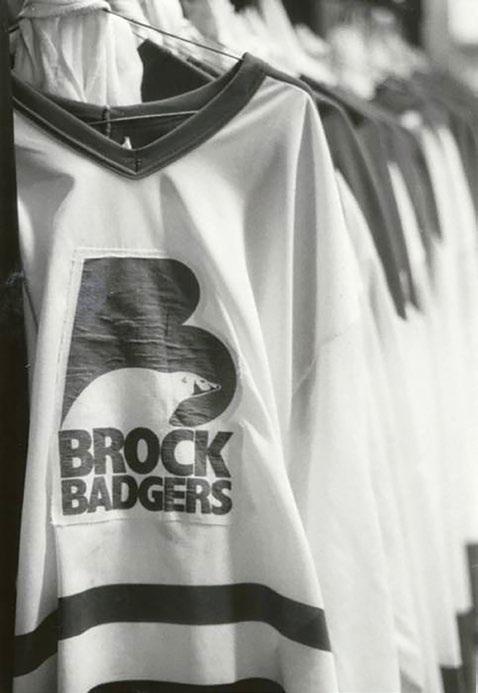
A close-up photograph of a Brock Badgers hockey jersey.
The 2001 edition of Surgite described Brock’s redesigned logo as “fierce, tenacious and aggressive while oozing attitude.” The new image was created by Athletics and the Office of External Relations in conjunction with Arlington Graphic Design Communications in St. Catharines.
Brock Athletics staff and studentathletes with what was, at the time, the newly designed Brock Badgers logo during an unveiling at Alphie’s Trough in 2001.
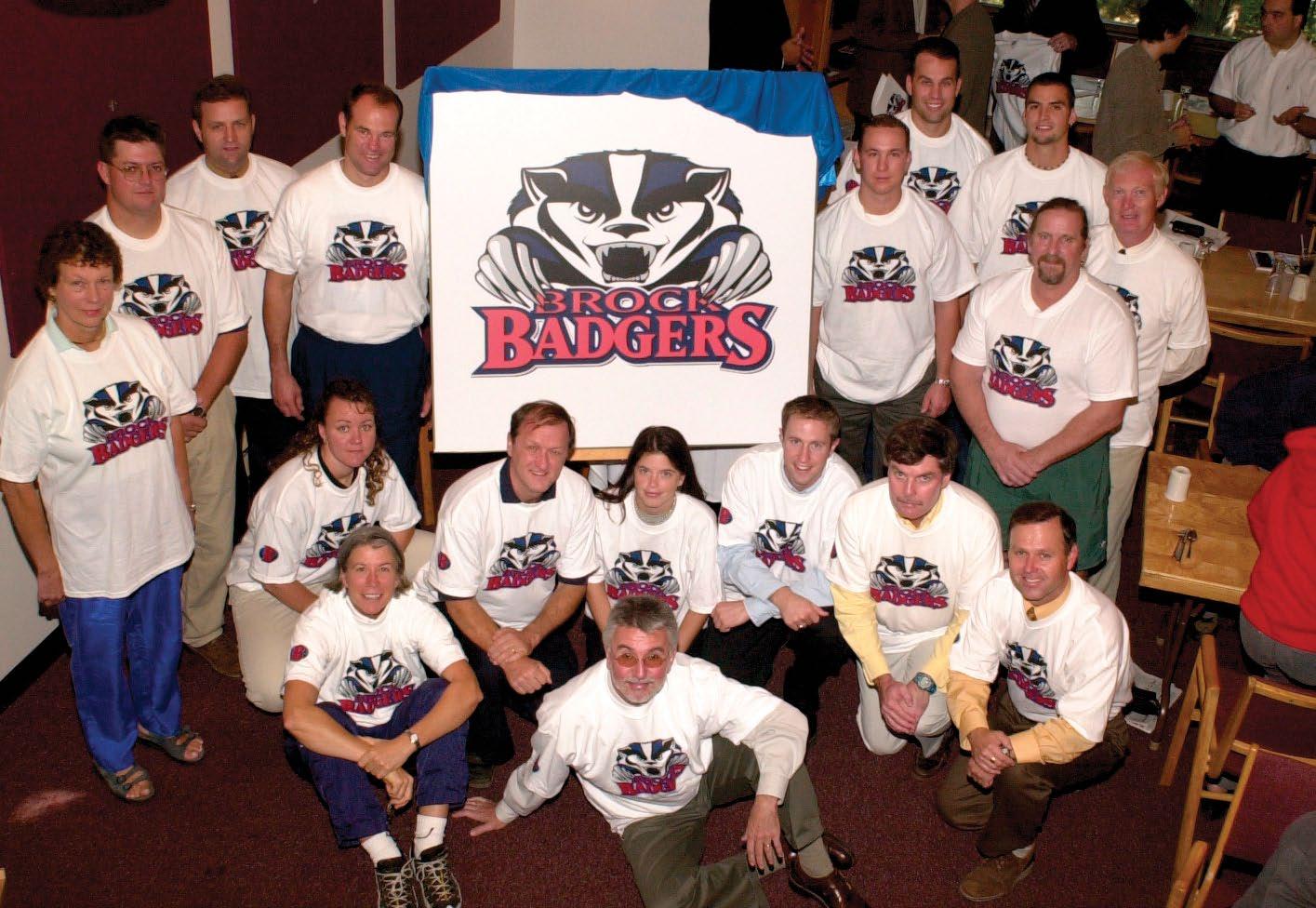
BY GREGORY JUNOP
Brock’s Cool Climate Oenology and Viticulture Institute (CCOVI) was in its infancy when Shiraz Mottiar (BSc ’00) first walked through its doors.
A member of the University’s inaugural Oenology and Viticulture (OEVI) graduating class, he has watched CCOVI transform through the years into an internationally recognized entity known for meeting the grape and wine industry’s most pressing needs.
The Institute was established in 1996 in partnership with the Grape Growers of Ontario and Wine Council of Ontario. As its reputation for cutting-edge research and education grew, so did demand for its graduates.
Many of them, like Mottiar, now find themselves shaping the future of the industry they once only dreamed of being a part of.
The Team Principal and General Manager of Malivoire Wine Company experienced a full-circle moment earlier this year when he became Chair of CCOVI’s Advisory Council.
He now heads the group that provides the Institute with a direct link to the changing needs and priorities of the industry.
“When I started out, we had no idea how much demand there would be for us as future graduates,” Mottiar says of his fellow OEVI classmates.
But, there were inklings of greatness on the horizon.
“As we did our placements, it became apparent that all the winery professionals were trained abroad. To think that if we succeeded, we could change that and build our own talent in Canada was exciting,” he says. “Now, almost 25 years later, we are the older guard mentoring the successive generations, which is quite an accomplishment to be proud of.
“Today, CCOVI is a respected institution, and grads from the OEVI program are in demand in university labs, cellars, vineyards, lecterns and boardrooms across the globe.”
Mottiar — who has been lauded for his contributions to the field and was named Quench Magazine’s Winemaker of the Year at the 2017 Ontario Wine Awards — believes innovative thinking has helped CCOVI, and its graduates, to remain at the industry’s forefront.
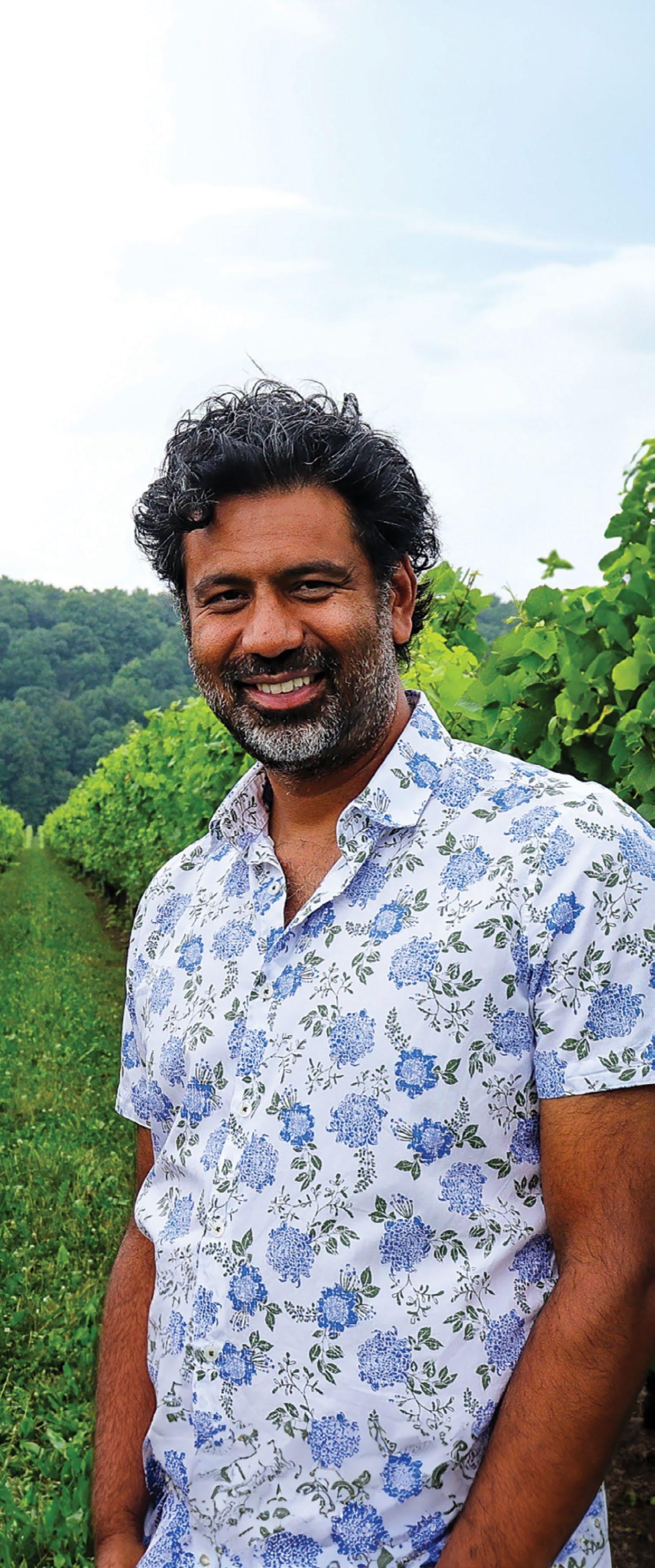
Today, CCOVI is a respected institution, and grads from the OEVI program are in demand in university labs, cellars, vineyards, lecterns and boardrooms across the globe.” — Shiraz Mottiar (BSc ’00), Brock graduate and CCOVI Advisory Council Chair

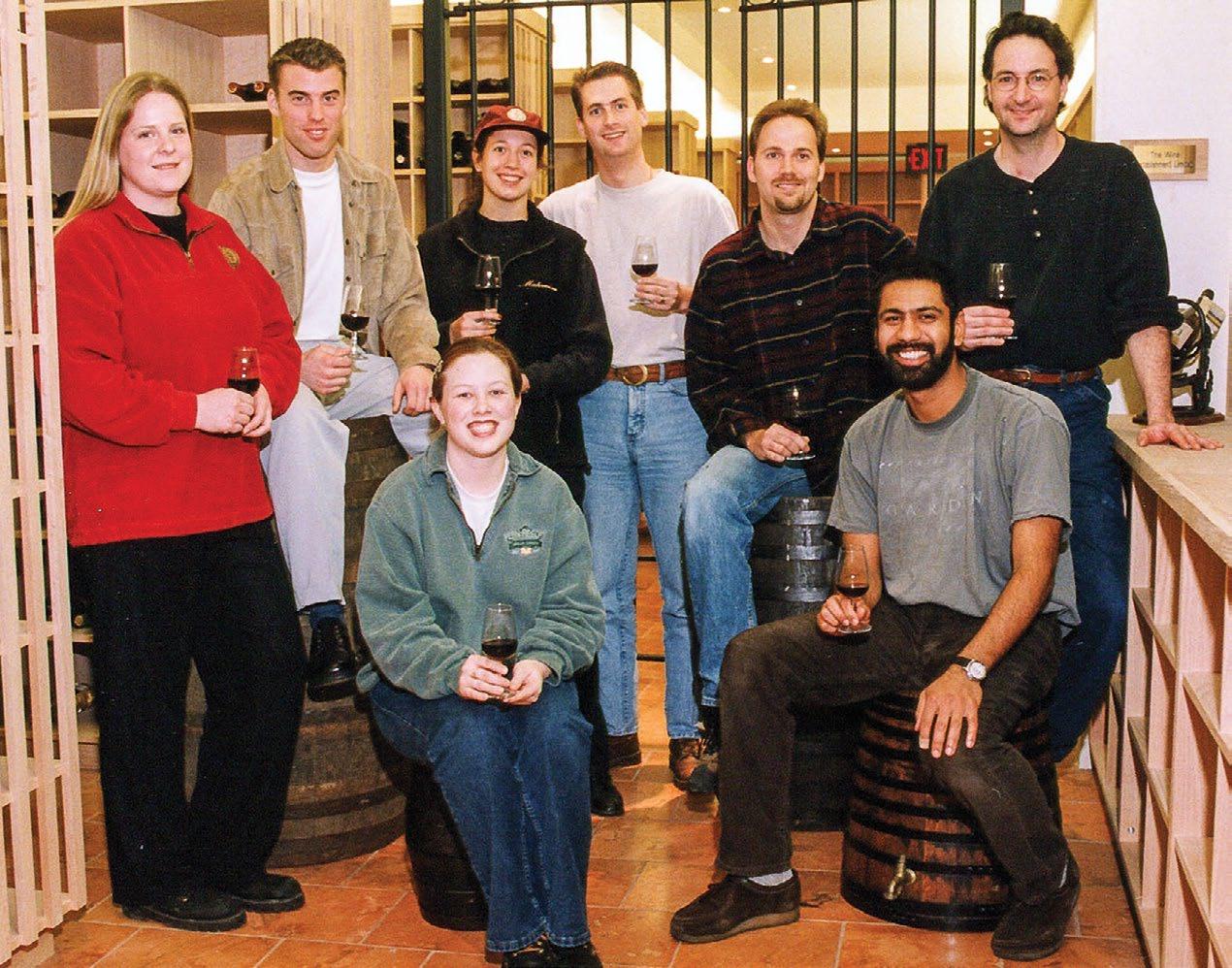
“CCOVI’s open-minded approach has allowed Canadian wines to evolve at an extremely rapid speed,” he says. “In the early days, research was the foundation of CCOVI. Now, CCOVI is also a hub, with lab services, continuing education in all facets of the industry, and a space for cross-Canada winemakers to collaborate and learn.”
That growth mindset has served alumni well.
The inaugural OEVI graduating class, and those that followed, have built a notable presence in senior positions at wineries and related organizations across Canada and beyond.
Among them is Rob Power (BSc ’00), winemaker for Creekside Estate Winery, who fondly remembers CCOVI’s humble beginnings.
“Looking back, it feels like CCOVI began with a pencil sharpener and good intentions. Now, it is a leader in terms of research, education and an incubator of ideas,” he says. “From Fizz Club to Experts Tasting, to any of the outreach programming and analytic services for the industry, CCOVI is a vital part of the North American wine scene.”
Anyone would be hard-pressed to spend much, if any, time in the industry without encountering CCOVI connections.
“While I was going to winemaker dinners in Toronto, my classmates like Dave Sorokowsky (BSc ’00), the senior winemaker with E. & J. Gallo Winery in California, was having his winemaker dinners in Tokyo,” Power says. “And then there’s the likes of Elizabeth Grant-Douglas (BSc ’00), who is now Director of Winemaking at La Crema Winery in California. Brock and CCOVI have equipped our graduates to thrive the world over.”
And that includes Power. He was named the 2024 Winemaker of the Year during the Cuvée Grand Tasting, an industry and public event celebrating the Ontario wine industry.
Power’s time at Brock has encouraged him to return as an instructor with CCOVI, lending his talent and time to guiding the next generation of winemakers.
1. Shiraz Mottiar (BSc ’00), a member of Brock’s inaugural Oenology and Viticulture graduating class, is now Chair of the Cool Climate Oenology and Viticulture Institute’s Advisory Council. 2. Winemaker Rob Power (BSc ’00) of Creekside Estate Winery (left) received the 2024 Cuvée Winemaker of Excellence Award, presented by 2019 Cuvée Winemaker of Excellence winner Bruce Nicholson. 3. Members of Brock’s first Oenology and Viticulture graduating class, which crossed the stage in 2000. Back row, from left: Megan Schofield, Robin Johnson, Elizabeth Grant-Douglas, David Douglas, David Sorokowsky and Rob Power. Front row, from left: Nicole Mercier and Shiraz Mottiar.



BY MARYANNE ST. DENIS
Everyone plays a part — whether they are frontline to the student experience or behind the scenes on campus — in helping our students to reach graduation, so it’s a rewarding day for everyone on campus.”
— Sandy Howe (MA ’23), Director, Enrolment Supports
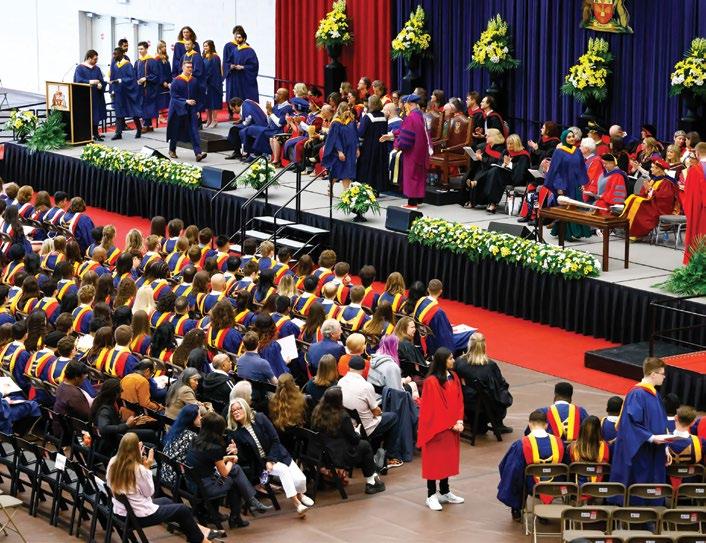

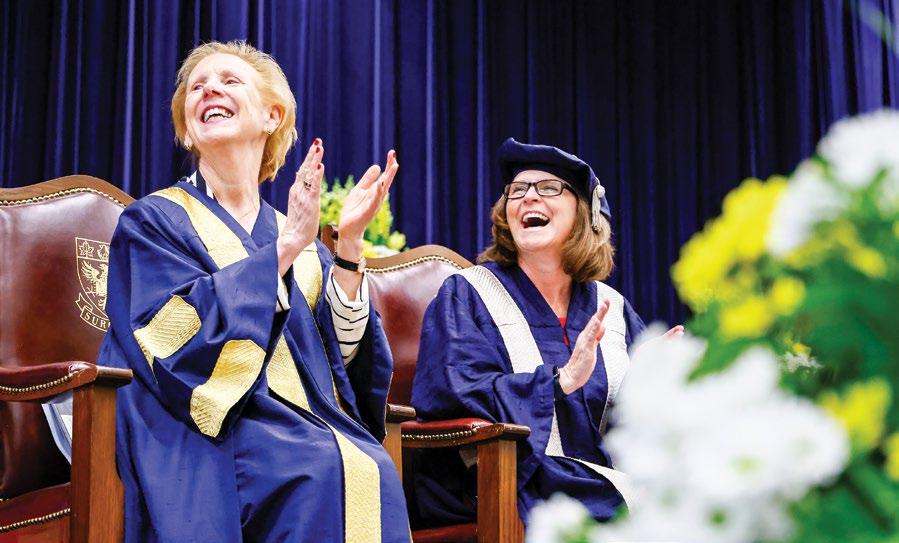


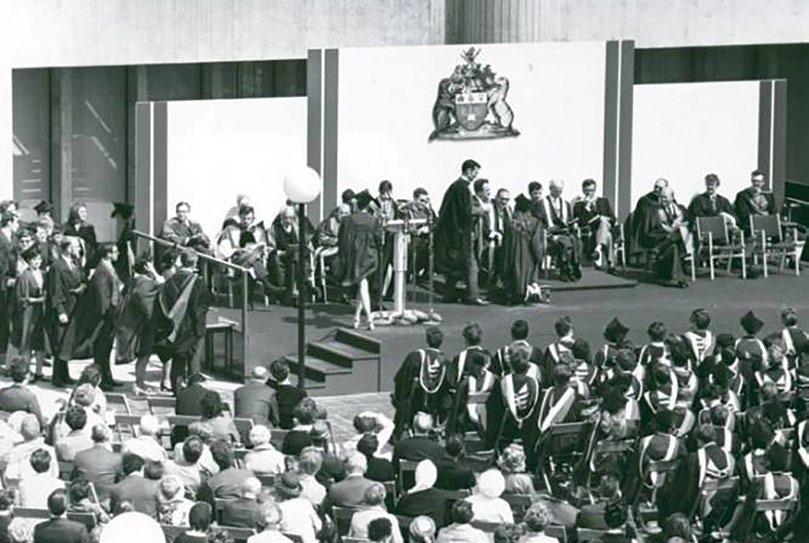
From Brock’s first Convocation in 1967 to today, the University has worked to make graduation a special occasion for each of its graduates and their families.
From the size of the graduating class to the larger — and now indoor — venue, much has changed since Brock University’s first Convocation in 1967.
And while the pomp and circumstance has remained the same, so has one other unwavering element: the pride felt by students and their families on graduation day.
“Convocation is the culmination of many years of hard work for so many students who have all reached this goal despite each having very different circumstances,” says Sandy Howe (MA ’23), the University’s Director, Enrolment Supports. “It’s truly a celebration like no other on campus.”
Brock University’s inaugural Convocation saw 39 graduates receive their degrees on the open-air, rooftop podium atop what is now the Rankin Family Pavilion. Now hosted in the Ian Beddis Gymnasium, about 5,000 grads celebrate the milestone moment each year between nine ceremonies in the spring and two in the fall.
“The number of Brock grads going out into the world every year is incredible,” Howe says. “The growing alumni family is a reflection of how far the University has come since its humble beginnings 60 years ago.”
While its literal size has expanded, the University has also grown in other ways through its ongoing commitment to foster a culture of reconciliation, decolonization, accessibility and inclusivity,
In recent years, Brock has introduced several Indigenous elements into its Convocation ceremonies, which now feature the presence of Indigenous Elders, music from the Strong Water Singers and the inclusion of Brock’s Spirit Bear, Entiohahathé’te, as part of the Reconciliation Ambearrister program.

The spring 2024 ceremonies marked the first time the Convocation procession was led by Brock’s Eagle Staff, a sacred symbol that represents many traditional Indigenous cultures and clears the way for everything that comes after it.
Brock has also worked to make Convocation more accessible to all, with American Sign Language interpreters, among other accommodations, now available at each ceremony, along with livestreaming services featuring closed captioning.
The University’s ability to adapt was tested during the unprecedented COVID-19 pandemic, which prevented traditional in-person ceremonies from taking place.
“COVID-19 threw a curveball to every post-secondary institute — and everyone around the world — in spring 2020,” Howe recalls. “We knew we had to find a way to still celebrate our graduates and the hard work that brought them to their graduation day.”
The University hosted online Convocation ceremonies in 2020 and 2021 — complete with a “Convocation-in-a-box” package of celebration essentials delivered to grads at home. Once restrictions lifted in 2022, alumni from the impacted years were invited to return to campus to cross the stage during legacy Convocation events.
Whether in person or online, the ceremonies are made possible through a collective effort from faculty and staff from across the University.
“Everyone plays a part — whether they are frontline to the student experience or behind the scenes on campus — in helping our students to reach graduation, so it’s a rewarding day for everyone on campus,” Howe says. “Helping people pursue and then achieve their dreams is something pretty special to be a part of.”

